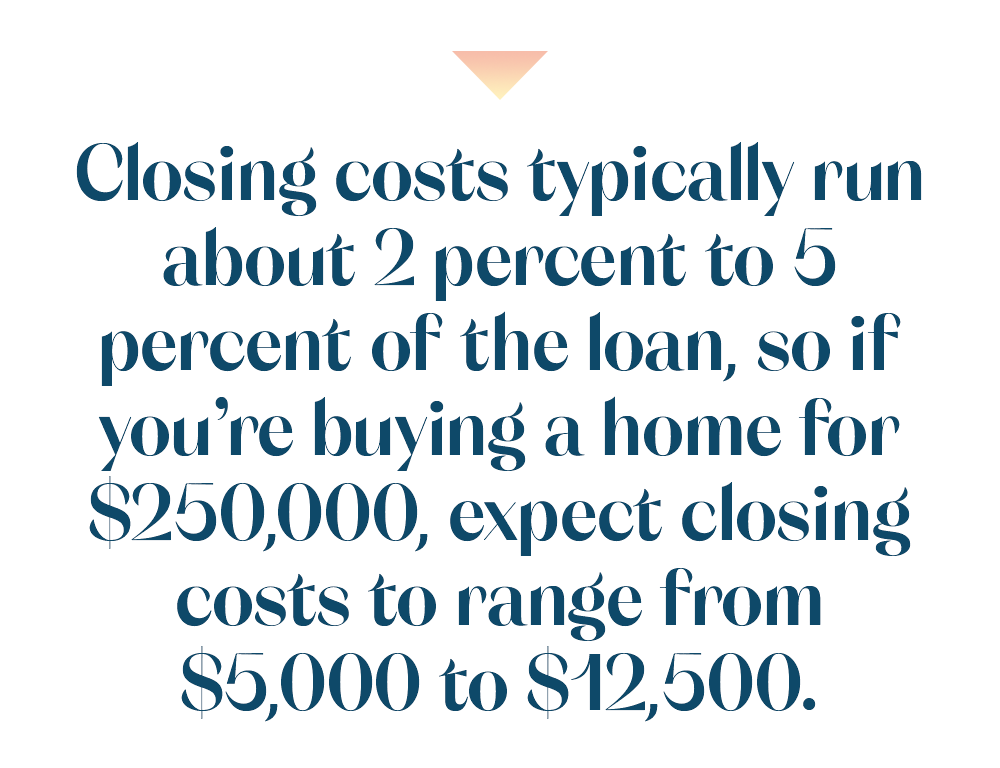How to Buy a Home
From getting your finances in order to popping that champagne.


You’ve been flirting with the idea of home ownership. Maybe Zillow has become one of your most frequently visited sites, or you’ve casually dropped into some open houses IRL, ran financial scenarios on a mortgage calculator, and find joy in browsing tile samples. But now you’re wondering how to get from “I’d like to own my house one day” to actually taking out a mortgage, buying a home, and having those subway tiles installed.
No doubt, purchasing a home is a huge financial decision—likely the biggest one of your life. From knowing the important difference between being pre-qualified and pre-approved to understanding things like appraisal contingencies and escrow, the process can feel daunting. Add to that the emotional rollercoaster that is finding your dream home and waiting to hear back on your offer.
Breaking the homebuying process down into steps, though, makes it much more manageable. Here, a step-by-step, expert-backed guide to buying a home.

1. Get your finances in order
At this early stage, position yourself to be a strong, qualified buyer by saving for a down payment and getting your credit in tip-top shape.
Every buyer’s financial picture will be unique. Yes, a credit score of 740 or above rewards you with the best interest rates, and putting a down payment of 20 percent or more into the home will save you from paying Private Mortgage Insurance, or PMI. (PMI typically costs 0.5 percent to 1 percent of the entire loan amount on a yearly basis, though is most commonly paid as a monthly premium. PMI is provided by private insurance companies, but arranged by your lender.) But, breathe easy: You can still purchase a home with a much lower credit score and far less of a down payment. Just as one example—because there are loads of loan options out there—your credit score can be as low as 500 for an FHA loan (a government-backed mortgage insured by the Federal Housing Administration) so long as you put down 10 percent, or it can be 580 if you put down 3.5 percent, explains Ignacio Rodriguez with Westside Estate Agency in Malibu, California. With conventional loans, you’ll be aiming for a credit score of at least 620.
The idea here? Don’t let perfect be the enemy of good! Market growth could outpace you if you’re waiting years to amass enough for a 20 percent down payment in your savings account or for your credit score to soar into the exceptional category.
Whether your target for a down payment is 3.5 percent or 20 percent, you’ll want to start saving money as soon as possible. “Ideally, it’s in an account that’s earning interest,” says New York City Broker Lindsay Barton Barrett of Douglas Elliman.
Get exclusive access to fashion and beauty trends, hot-off-the-press celebrity news, and more.
Consider talking with a financial advisor about your strategy for paying off high-interest loans while simultaneously saving for a home. Depending on market conditions, it may make absolute sense to buy a home before other debts—ahem, those pesky student loans!—are paid off so that you can build equity and have an asset that can appreciate in value over time, Barton Barrett says.
As far as credit goes, you’re entitled, by law, to a free credit report every year. This report won’t actually tell you your scores (which could vary among the three bureaus), but it will help you pinpoint anything that’s pulling your score down. One in five people have mistakes on their credit report, according to the Federal Trade Commission, so you’ll want to get any errors addressed before you begin shopping for a mortgage. You can keep tabs on your actual credit scores with free online score trackers like Credit Karma. Or, many banks and credit card companies have free credit score trackers integrated into the online account.
Now is also a good time to give your credit a little TLC. Consistently making on-time payments is the best thing you can do for your credit score. You can give it a quick boost by paying down credit card balances so your utilization on each card isn’t more than 30 percent—that means, if you’ve got a $1,000 limit, keep your balance below $330 to prove to creditors you’re not over-extending yourself.
2. Snag a pre-qualification letter
Before you start looking at homes, you’ll want to get a pre-qualification letter, which states that the lender is tentatively willing to lend to you up to a certain point. This signals to real estate agents that you’re serious about buying, not just looking at homes for fun. A pre-qualification letter will also help you set your budget and narrow down which homes will be in your price range, says New York City real estate agent Rebecca Blacker with Warburg Realty.
Something to keep in mind: Pre-qualified is a baby step towards a loan. You self-report information about your credit score and your income, and, in turn, the lender will give you an idea of how much you can afford. Being pre-approved, though, is a much more thorough process and will get you closer to the closing table: It’s when that information about your income and your credit scores is verified. More on that, below.
3. Hire a real estate agent
Think of your real estate agent as the captain of your home-buying team. Because of this, you’ll want to hire an agent who can make strong referrals for mortgage brokers, real estate attorneys, and home inspection professionals, says New York City agent Agent Kemdi Anosike of Warburg Realty. “Most importantly, you need a real estate agent who will listen to you and understand your needs,” Anosike says.
Oh, and guess what? You likely won’t be on the hook for paying for your real estate agent. It’s the seller who most commonly covers the commission costs for both the buyer’s and seller’s agents, explains Joan Pallone a realtor with Pallone and Associates in Broomfield, Colorado. There are some rare exceptions when a buyer would pay their own agent’s commission, like when the home is for sale by owner.
4. Get pre-approved for a mortgage
You’ll position yourself as a strong buyer if you’re pre-approved for a mortgage before you start house hunting and putting in offers. “Oftentimes, the ‘perfect homes’ are on the market for less than a few days,” says Stevie Rangel, an agent with Compass in Los Angeles, California. You don’t want to be scrambling to get pre-approved while other buyers are submitting offers. Many sellers won’t entertain offers from prospective buyers who don’t yet have their financing lined up.
During this step, which is more formal and thorough than pre-qualification, you’ll be handing over lots of documents, like W2s, paystubs, bank statements, and tax returns to your lender. Have your paperwork organized and ready to go.
5. Let the house-hunting begin
At this stage, you’ve got a budget in mind and communicated to your real estate agent what’s important to you in the home search—whether that’s a big backyard for your dog, a short commute to work, or a walk-in closet.
As you’re touring homes or going to open houses, bring a notebook to keep track of the pros and cons of each property. It’s tough, but don’t get distracted by flaws that can easily be fixed, like a Cookie Monster–blue bedroom or boring builder-grade boob lights. Do pay attention to things that will be harder to address, like water pressure and the amount of natural light.
It could be love at first home tour or you could need to see a few dozen homes before you find the right one. The average buyer typically looks at 10 homes over a 10-week span, according to a report from the National Association of Realtors.
6. Make an offer
You’re pre-approved for a mortgage and your real estate agent found a property you love. It’s time to put in an offer!
Your real estate agent will have “comps” that show what other homes in the area have sold for and will help inform your offer. Oftentimes, first-time homebuyers will be unnecessarily worried about paying too much for a home, says Angela Carrasco, a real estate agent based in Los Feliz, California. And a common mistake first-time buyers make is coming in too low, cautions Daniele Kurzweil, a Licensed Real Estate Salesperson with the Friedman Team at Compass in NYC. Even if you’ve heard your market favors buyers, you probably still don’t want to come in way below the listing price. “The problem with this tactic is that a seller will not see you as serious,” Kurzweil says.
But, there are some safeguards in place to ensure you’re not overpaying, explains Carrasco, so long as you don’t waive your contingencies. “The reality is that a deal will not close, meaning the lender will not approve a loan, if the home doesn’t appraise,” Carrasco says. (More on contingencies and appraisals shortly!)

If you really fall head over heels in love with a home, and you’re in a competitive market, you can sweeten your offer with a buyer’s letter, which helps you express why you’re interested in the home in a personal way, says Beatrice de Jong, a Los Angeles realtor and consumer trends expert at Opendoor. “The best offer letters focus on the aspects of the home that you love, compliment the sellers on their tastes or the way they have maintained the home, and show them that you are committed to a smooth closing,” she says.
When you make an offer, the seller will typically require “earnest money” in order to enter a contract. “An earnest money deposit is a signal of good faith on behalf of the buyer that she is serious about the home and willing to place some skin in the game,” says Salt Lake City, Utah realtor Jen Horner with RE/Max Masters. The amount of earnest money required can vary by contract, the seller's preference, as well as by city or state, Horner explains. Typically, the deposit will fall between 1 percent and 5 percent of the home's purchase price, she says. A buyer can get her earnest money back if the sale doesn’t go through because of a reason listed in the contract’s contingencies. Some common contract contingencies that protect buyers, allowing them to back out of the purchase, relate to home inspections, financing that falls through, and home appraisals that come in too low.
Once you’ve made an offer, the seller will accept, make a counteroffer, or outright reject it.
7. Get an inspection
Once the seller accepts your offer, it’s time to get a home inspection. Almost all offers include a “home inspection contingency” that allows the buyer to back out of the deal if there are significant problems in the inspection findings.
The inspector will look for all kinds of problems the home could potentially have, from the foundation all the way up to the roof, including things like faulty wiring or signs of mold growth.
Home inspectors are looking for problems that could pose safety concerns, but they aren’t concerned with cosmetic issues. They’ll report something like a crack in the settlement but won’t make note of a sloppy paint job.
Buyers pay for home inspections most of the time, explains Realtor Kelly Malloy, with Windermere Real Estate in Seattle. She recommends adding on a sewer scope, which examines exterior plumbing. Together, this costs between $700 and $800, but could vary depending on your market or the size of the home.
Depending on your contract, you—the buyer—can request that the seller make repairs based off of the inspection or provide you with a credit so you can have the repairs completed. Before you make it to the closing table, hand over your money, and sign papers, you will have a chance to do a final walk-through to make sure everything that was to be fixed has been addressed. If possible, schedule this after the sellers move out—just in case the movers cause any damage.
Sometimes, though, the deal falls through—maybe too many red flags popped up during the home inspection and the seller is willing or able to do the work, Malloy explains. While it might sting a little, trust the process, she advises. Your home is out there!
8. Get an appraisal
Next up is an appraisal, which is required if you’re taking out a mortgage, but can be waived in an all-cash deal. During this, a licensed appraiser comes to the home and does a thorough walk-through of the home to determine how much it’s worth. Your appraiser is looking at what similar homes in the neighborhood recently sold for, as well as any renovations or upgrades that may have added value to the home, and taking note of the condition of the property. Essentially, the appraiser is trying to make sure that the contract price is fair for not just the buyer and seller, but also the lender. If the appraisal comes in lower than the contract price, the lender won’t approve the loan.
Even in a multiple-offer situation, the owner needs to keep the appraisal in mind, explains Brandy Grell, Associate at RE/MAX Professionals in Stillwater, Minnesota. If you offer $230,000 and the home value comes in at $210,000, that extra $20,000 needs to be shored up. “The bank will only loan the value it believes the home is worth,” Grell says.
Several scenarios could play out at this point. The best-case scenario for buyers? The seller re-negotiates so that the sale price is in line with the appraisal. Another option is to put more money into the down payment to make up for the gap between what the home appraised for and what you’re purchasing it for. Also, a home appraisal contingency in your contract allows you to walk away from the deal if the appraisal comes in low, and you will get your earnest money back.
9. Head to the closing table
Put that champagne on ice: You’re in the home stretch. It may have taken a little longer than you expected, though. On average, it takes 45 days to close on a home loan, according to loan software company, Ellie Mae, but about one in three closings are delayed. Setbacks that can push out your closing date or require you to reschedule could include issues from the inspection or the appraisal, or a credit fluctuation that changes the terms of your loan. You can avoid this by not doing anything that would affect your credit or debt-to-income ratio, like maxing out a credit card or taking out a car loan.
At least three business days before closing, you’ll receive your “Closing Disclosure,” a five-page document that includes the terms of your loan and a list of fees associated with the closing.

Closing costs typically run about 2 percent to 5 percent of the loan, so if you’re buying a home for $250,000, expect closing costs to range from $5,000 to $12,500. You can pay this out of pocket, or you may be able to roll it into your loan, but keep in mind if you do the latter, you’ll be paying interest on it. Some of the common closing costs include fees for the appraisal, loan origination, title search, plus prepaid expenses such as property taxes, homeowners insurance, and interest until your first payment is due.
At closing, you’ll sign all the required documents for your mortgage, hand over a cashier’s check for your down payment and other fees, and receive the keys to your new place. Some states require an attorney to be involved in real estate transactions or be present at closing. Buyers will often choose to work with an attorney as an added protection if a sale has complications, like buying a home in a flood zone or purchasing a foreclosed home.
Depending on your loan terms, you may also be required to set up an escrow account. Basically this holds your money until it becomes due, and, in the context of mortgages, it could be used to pay for things like property taxes, homeowner’s insurance, and HOA fees, explains Nora Apsel, co-founder at Morty. The bank collects an upfront escrow payment from you, and then you pay into the account monthly for the life of your loan, says Apsel. This streamlines payments, but also helps protect the lender so that your home isn’t foreclosed on because of unpaid property taxes, like this guy who lost his home for not paying $8.41!
Once you've closed, it’s time to saber that champagne and roll out the “home sweet home” welcome mat. You're a homeowner!
For more stories like this, including celebrity news, beauty and fashion advice, savvy political commentary, and fascinating features, sign up for the Marie Claire newsletter.
Related Stories

